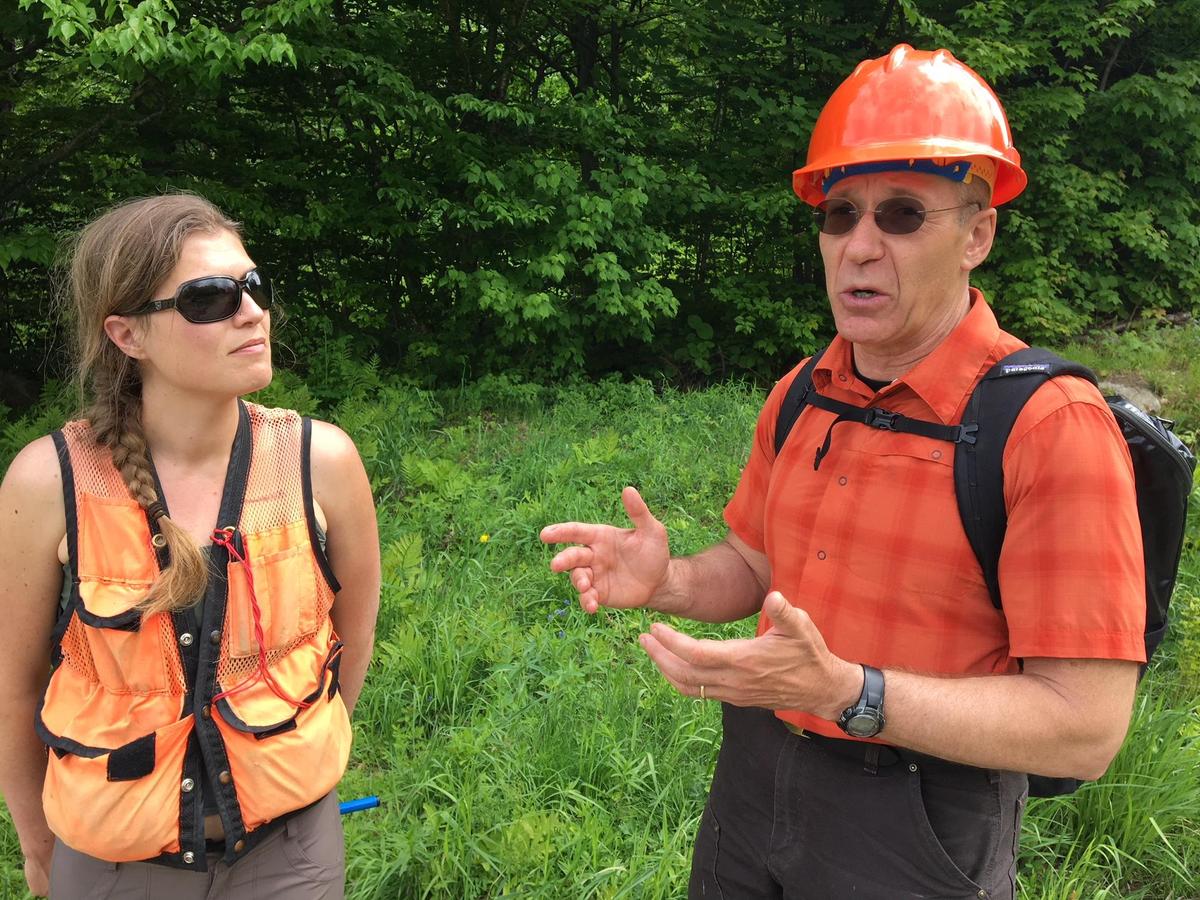Researchers: Acid Rain Success Story Shows Value Of Science Informing Public Policy

Alexandra Kosiba and Paul Schaberg teamed up to study red spruce recovery. Photo by John Dillon for VPR
Remember acid rain? In the 1970s and ‘80s, scientists found that rain 100 times more acidic than normal was harming the mountain forests of New England and New York.
The pollution was linked to fossil fuel plants in the Midwest. Now, a new study shows red spruce trees are recovering thanks to tighter pollution laws.
Researchers say this environmental success story shows the value of science in shaping public policy.
On a steep slope in the Green Mountains, forest researcher Alexandra Kosiba does a kind of medical exam on a towering red spruce.
She uses a long, drill-like instrument to extract a narrow slice of tree, all the way into the core. It makes a rhythmic clicking sound as it cuts through the wood.
Kosiba draws out the cutting slowly, and you can see the growth rings marked by dark and light bands. The sample backs up what Kosiba and her colleagues observed in a recent study of red spruce in five northeastern states: After decades of decline, the trees are healthy again.
“It looks like the recent growth is quite large, and if you go back a decade they start getting a lot smaller, and then even another decade they’re really tiny; they’re incredibly small,” she said.
Indeed, three decades ago the news was pretty grim: Millions of trees like this one were dying, their needles red and their growth stunted.
